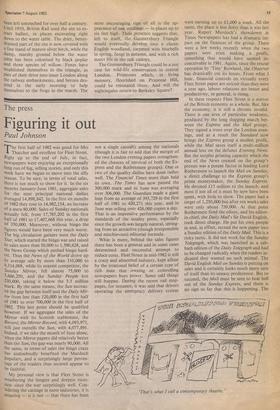In the Gunnersbury Triangle
Alastair Best
An interest in London's natural history takes one to strange and romantic places, like Perry Oaks Sewage Farm where waders probe the ooze as jet airliners thunder overhead, or Barn Elms reservoir, downstream from Hammersmith Bridge, where huge numbers of wintering duck con- gregate without permission from the Metropolitan Water Board. Such sites are man-made and man-maintained. But there are other equally interesting pockets of wild life in Inner London which have come into being as a result of man's neglect.
Inner London boroughs are dotted with derelict sites, awaiting 'development'. At first glance, they do not look up to much. They are usually strewn with building debris, dismembered motor cars, abandon- ed fridges, piles of rubber tyres and other artefacts which render them irresistible to small boys and deeply offensive to local residents. Closer inspection however, reveals a rich fauna and flora beginning to take shape. Mallows, feeding on dog excre- ment, are bursting into bloom; lime-loving plants, like white tampion, are invading the builders' rubble, and seedlings from neighbouring gardens — figs, strawberries, silver birch — have begun to take root. Buddleia is rampant, its foliage providing cover for nesting blackbirds and its long flower sprays acting as a feeding station for red admirals, small tortoise-shells, orange- tips, large and small white butterflies — and many other insects. Occasionally, in the flooded basement of a demolished building for example, a rich pond community is get- ting under way: newts, frogs, perhaps a pair of grey wagtails; with Stands of reed mace and bog bean pushing up gamely through tyre inner-tubes and old Revelation suit- cases.
I visited a number of such sites recently with Chris Rose, the conservation officer of the London Wildlife Trust. Most of their' were quite small, little more than an acre in extent. Yet the Trust feels that suitablY tidied up by volunteer labour and with a lit- tle gardening here and there to encourage the greatest possible variety of species they could be run as miniature nature reserves in the heart of the city — infinitely more en- joyable and infinitely less expensive than the dismal rye-grass and cobbles of the borough parks department. Some patches of derelict land might, almost be worthy of the title Site of Special Scientific Interest. How many people, hurtling down Chiswick High Road on their way to Heathrow airport, are aware theY are passing alongside the last surviving piece of wild woodland in central London. The Gunnersbury Triangle is bordered by the British Rail North London line, the District line and a small industrial estate. The land belongs to British Rail, who' predictably, have designs on it. In companY with a developer BR have filed a planning application with the London Borough of Hounslow for 25 industrial and seven ware' house units. Local naturalists, however, have already persuaded the parks depart- ment to impose a general tree preservation order as a prelude, they hope, to designating the whole area a local nature reserve.
Most overgrown sites in London shoo' woodland in its early stages of develop' ment. The fascination of the Gunnersbury Triangle lies in the fact that the site has been left untouched for over half a century. Until 1910, British Rail used the site to ex- tract ballast, in places excavating right down to the water table. The drier, better- drained part of the site is now covered with a fine stand of mature silver birch, while the damp, marshy ground below the water table has been colonised by black poplar and three species of willow. Foxes have established themselves in the triangle, as Part of their drive into inner London along the railway embankments, and herons des- cend in the early morning to help themselves to the frogs in the marsh. The
most encouraging sign of all is the ap- pearance of oak seedlings — in places up to six feet high. Their presence suggests that, left to itself, the Gunnersbury Triangle would eventually develop into a classic English woodland, carpeted with bluebells in spring, fungi in autumn, and with a rich insect life in the oak canopy.
The Gunnersbury Triangle could be a test case for wild-life conservation in central London. Primroses which, in living memory, flourished on Primrose Hill, could be reinstated there. And will the nightingales return to Berkeley Square?



































 Previous page
Previous page